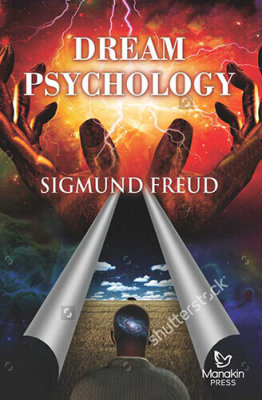Sigmund Freud | Category: Social Science
Book Details
ISBN: 9789386677181
YOP: 2018
Pages: 152
Order also on
From the dawn of human consciousness, dreams have always fascinated us. Do they mean something? Do dreams help us see into thefuture? These questions have intrigued us for centuries. Sigmund Freud was one of the first people to examine dreams seriously and interpret them in the context of our waking lives. In Dream Psychology: Psychoanalysis for Beginners, the Austrian psychoanalyst, Dr Sigmund Freud shares his exciting early discoveries that there was indeed a connection between his patients’ dreams and their mental disturbances. Sigmund Freud was educated to be a neurologist, but went on to revolutionize the world of human psychology by establishing the theories of psychoanalysis. This is a clinical therapeutic method for dealing with mental disturbances. He considered dreams as extra information that the patient was unable to convey to the analyst during the waking state.
Dream Psychology, first published in 1921, and translated by MD Eder, is a definitive work which changed the climate of treatments and handling of different neuroses and dysfunctional people. The book is divided into nine chapters. In many of them, Freud uses his own dreams as subjects for interpretation, while in others, he uses his patients’ dreams to elucidate his theories of psychoanalysis. While some of the theories may no longer be relevant or valid in today’s world, this book is indeed one of the foundation stones of Freudian psychoanalysis and marked a water-shed in the attitude towards dreams. He refuted the purely medical and purely spiritual interpretations that had been prevalent till then and proposed a completely new theory.
Some of the most interesting parts of the book deal with symbols and language in dreams. Freud developed a standard system of symbols and their actual meaning based on his studies and used it to interpret and decode what his patient was really thinking and conveying. Many of the dreams he recounts were analyzed in the context of Victorian attitudes towards sexuality, repressed desires and unfulfilled wishes. By analyzing and understanding these dreams, Freud’s patients were able to get a better understanding of their underlying, unexpressed motives and this set them on the path to healing.
1. Dreams Have a Meaning
2. The Dream Mechanism
3. Why the Dream Disguises the Desire
4. Dream Analysis
5. Sex in Dreams
6. The Wish in Dreams
7. The Function of the Dream
8. The Primary and Secondary Process-Regression
9. The Unconscious and Consciousness-Reality
From the dawn of human consciousness, dreams have always fascinated us. Do they mean something? Do dreams help us see into thefuture? These questions have intrigued us for centuries. Sigmund Freud was one of the first people to examine dreams seriously and interpret them in the context of our waking lives. In Dream Psychology: Psychoanalysis for Beginners, the Austrian psychoanalyst, Dr Sigmund Freud shares his exciting early discoveries that there was indeed a connection between his patients’ dreams and their mental disturbances. Sigmund Freud was educated to be a neurologist, but went on to revolutionize the world of human psychology by establishing the theories of psychoanalysis. This is a clinical therapeutic method for dealing with mental disturbances. He considered dreams as extra information that the patient was unable to convey to the analyst during the waking state.
Dream Psychology, first published in 1921, and translated by MD Eder, is a definitive work which changed the climate of treatments and handling of different neuroses and dysfunctional people. The book is divided into nine chapters. In many of them, Freud uses his own dreams as subjects for interpretation, while in others, he uses his patients’ dreams to elucidate his theories of psychoanalysis. While some of the theories may no longer be relevant or valid in today’s world, this book is indeed one of the foundation stones of Freudian psychoanalysis and marked a water-shed in the attitude towards dreams. He refuted the purely medical and purely spiritual interpretations that had been prevalent till then and proposed a completely new theory.
Some of the most interesting parts of the book deal with symbols and language in dreams. Freud developed a standard system of symbols and their actual meaning based on his studies and used it to interpret and decode what his patient was really thinking and conveying. Many of the dreams he recounts were analyzed in the context of Victorian attitudes towards sexuality, repressed desires and unfulfilled wishes. By analyzing and understanding these dreams, Freud’s patients were able to get a better understanding of their underlying, unexpressed motives and this set them on the path to healing.
1. Dreams Have a Meaning
2. The Dream Mechanism
3. Why the Dream Disguises the Desire
4. Dream Analysis
5. Sex in Dreams
6. The Wish in Dreams
7. The Function of the Dream
8. The Primary and Secondary Process-Regression
9. The Unconscious and Consciousness-Reality
| Weight | 0.205 kg |
|---|---|
| Dimensions | 21.7 × 14 × 0.8 cm |
| yop |
2018 |
| subject-category |
Social Science |
| isbn |
9789386677181 |











